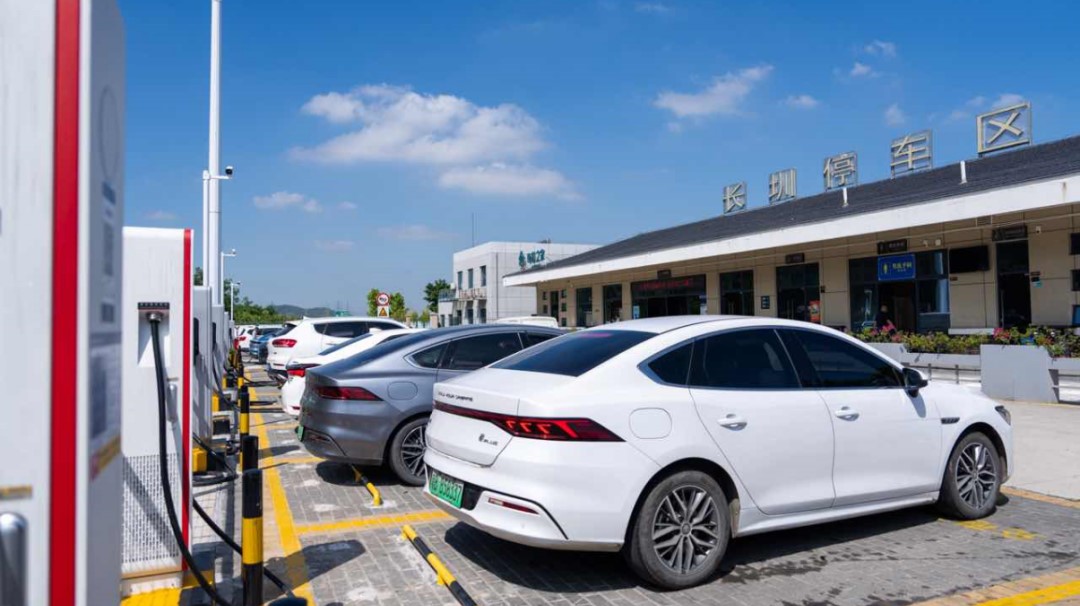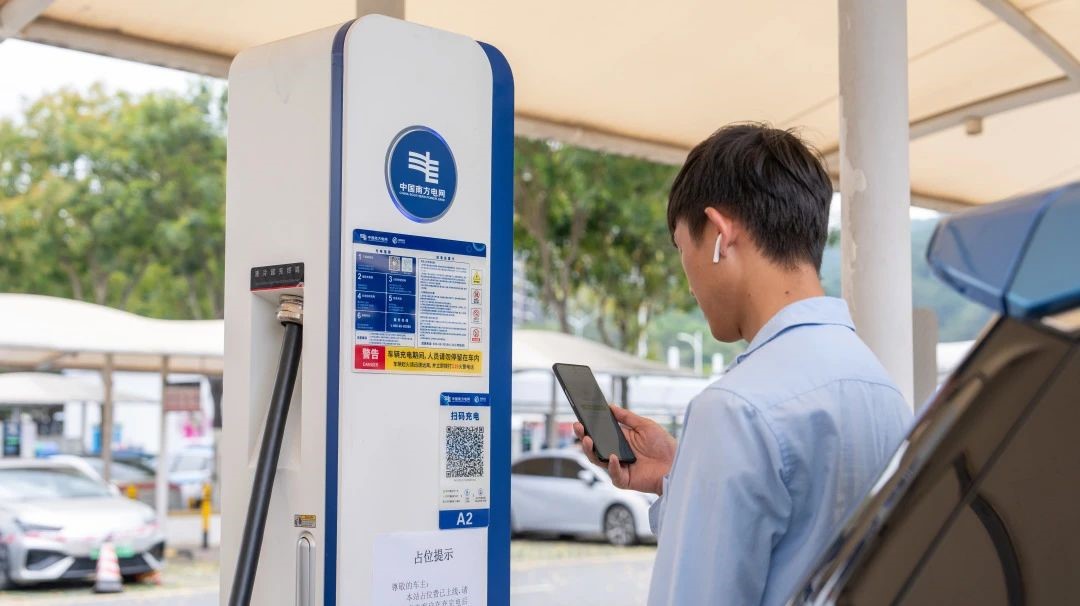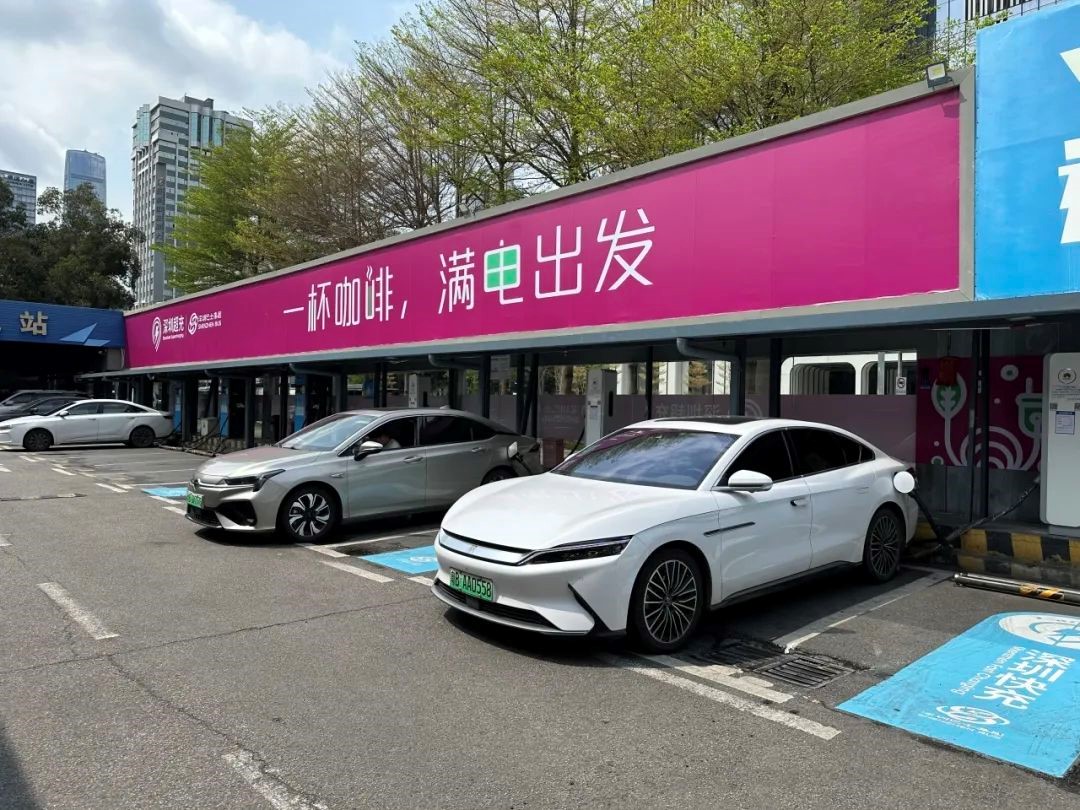




- BRNN
- BRI News
- BRNN News
- Database
Official Documents Polices and Regulations
Inter-government Documents International Cooperation BRI Countries
Business Guide Economic Data BRI Data
Trade
Investment Projects Latest projects
Cases - Content Pool
On his way home from work in Shenzhen, south China's Guangdong province, Mr. Yin, a new energy vehicle (NEV) owner, made a stop at a supercharging station located two kilometers away from his workplace.
After plugging in and scanning a quick response (QR) code with his mobile phone, Yin saw the battery level of his car rising quickly. In no time, his car was fully charged.
"I recharge my vehicle once every two weeks for a quick 20-minute charge at a supercharging station. With a range of nearly 500 kilometers, it's enough for my daily commute and weekend trips," Yin explained.

Photo shows a supercharging demonstration station at a service area of an expressway in Shenzhen, south China's Guangdong province. (Photo courtesy of Shenzhen power supply bureau under China Southern Power Grid)
Yin's car has a battery capacity of 100 kilowatt-hours. According to him, it takes only a little over an hour for his car to be fully charged with a fast charger of around 80 kilowatts, while it would take a whole night in the case of a slow charger of 7 kilowatts.
"Supercharging really saves me a lot of time," he said.
Charging piles can be divided into three categories according to their charging speeds: slow chargers, fast chargers, and superchargers. Slow charging piles primarily use alternating current (AC) charging, whereas fast charging and supercharging piles are based on high-voltage direct current (DC) charging technology, which can transmit larger amounts of power with lower energy losses compared with AC transmission.
The supercharging devices in Shenzhen all have a rated power of no less than 480 kilowatts, which can charge NEVs at a speed of up to one kilometer per second.
As of October 18, Shenzhen had built 671 supercharging stations for NEVs, with the number of supercharging stations and charging guns exceeding that of gas stations and fuel nozzles.
In September 2023, the city rolled out an action plan to construct high-quality NEV supercharging and battery swapping facilities from 2023 to 2025, aiming to build a world-class "city of supercharging." The plan has ushered in the rapid deployment of supercharging stations across the city.
With electric vehicles massively adopted in urban buses and taxi fleets, Shenzhen's NEV ownership has exceeded 1.16 million, accounting for over 25 percent of its total ownership of motor vehicles, which means for every 100 vehicles sold in the city, 75 are NEVs.
The ever-growing number of "high-output" charging facilities and "large-capacity" batteries in the city is helping to relieve the range anxiety among NEV owners.
To lower the charging time, it needs to improve the batteries' chemical system, structural design, and application strategies, according to He Xuan, an executive with Sunwoda EVB Co., Ltd., a power battery manufacturer based in Shenzhen.

A citizen charges his car using a supercharging device at a charging station in Shenzhen, south China's Guangdong province. (Photo/Huang Zhiwei)
In 2019, the company began to develop supercharging technology in line with market and user demands. So far, it has collaborated with many Chinese automakers such as XPeng, Geely, and Li Auto. Its flash charging battery is now in mass production, enabling an 80 percent recharge in just 10 minutes, He noted.
Industry insiders pointed out that supercharging technology is still in its early stages, and most of the vehicle models available on the market continue to rely on slow or fast charging options.
While acknowledging that it may take some time for the market to fully embrace this technology, they believe that supercharging represents the future direction of the industry's development.
Since 2023, Shenzhen has seen an intensive release of high-end supercharging car models, with the number exceeding 40 by June 2023 and 140 by May 2024, according to an official with Shenzhen's development and reform commission.
Analysts of the industry predicted that more than 13 million high-voltage fast charging NEVs will be seen in the Chinese market by the end of 2026.
"Can I charge my car at a supercharging station if it does not allow supercharging?" Many car owners have raised this question.
Sources say that Shenzhen's supercharging stations have combined supercharging and fast charging technologies. The supercharging piles, which are compatible with a range of vehicle models, can automatically adjust the single-gun output power based on the vehicle's power.
Apart from building charging piles and stations, the "city of supercharging" is striving to develop a unified and open market system, which encourages orderly competition and a concentrated layout of charging facilities.
A range of measures have been taken in the city, such as expanding the charging facilities' application scenarios, elaborating construction plans, setting standards, and promoting technological innovation, so as to build a sound industrial ecosystem.
With the continuous efforts to build easily accessible and user-friendly supercharging facilities, "making charging as convenient as refueling" has gradually become a reality in Shenzhen.

Photo shows a supercharging station in Shenzhen, south China's Guangdong province. (Photo from the WeChat official account of Shenzhen Municipal Bureau of Transportation)
More and more local citizens are benefiting from the industrial ecosystem. For instance, Mr. Xiong, a ride-hailing driver, can now easily locate charging stations, find his way, and charge with just one click on the "i Shenzhen" app on his phone.
"I can easily find out where the nearest charging station is, the price, distance, the availability of charging piles, and whether there are available spots," Xiong said.
The convenience is attributed to Shenzhen's integrated power storage and charging network built on a unified spatiotemporal information platform with city-wide coverage, full automation, and fine modeling.
The city has incorporated the previously scattered power storage and charging resources, such as charging piles, energy storage stations, and photovoltaic power stations, into the network through digital twin technology in a fully controllable manner. It has built a large-scale resource pool, achieving science-based, intelligent, and targeted management of these resources.
As one of the earliest cities in China to develop the new energy industry, Shenzhen has established a robust and complete industrial chain, with 24,000 new energy and digital energy companies closely interconnected. Chargers produced in Shenzhen account for more than 50 percent of China's national market while charging modules, a core component of charging piles, manufactured in the city surpass 70 percent national market share.
With a focus on key areas such as expressway services areas, transportation hubs, parks, shopping malls and supermarkets, Shenzhen is creating a supercharging network featuring a sound balance between supply and demand, advanced facilities, and leading technologies.
It aims to build 1,000 supercharging stations by the end of this year, and form a "600-meter charging service circle" for NEV owners.

Tel:86-10-65363107, 86-10-65368220, 86-10-65363106